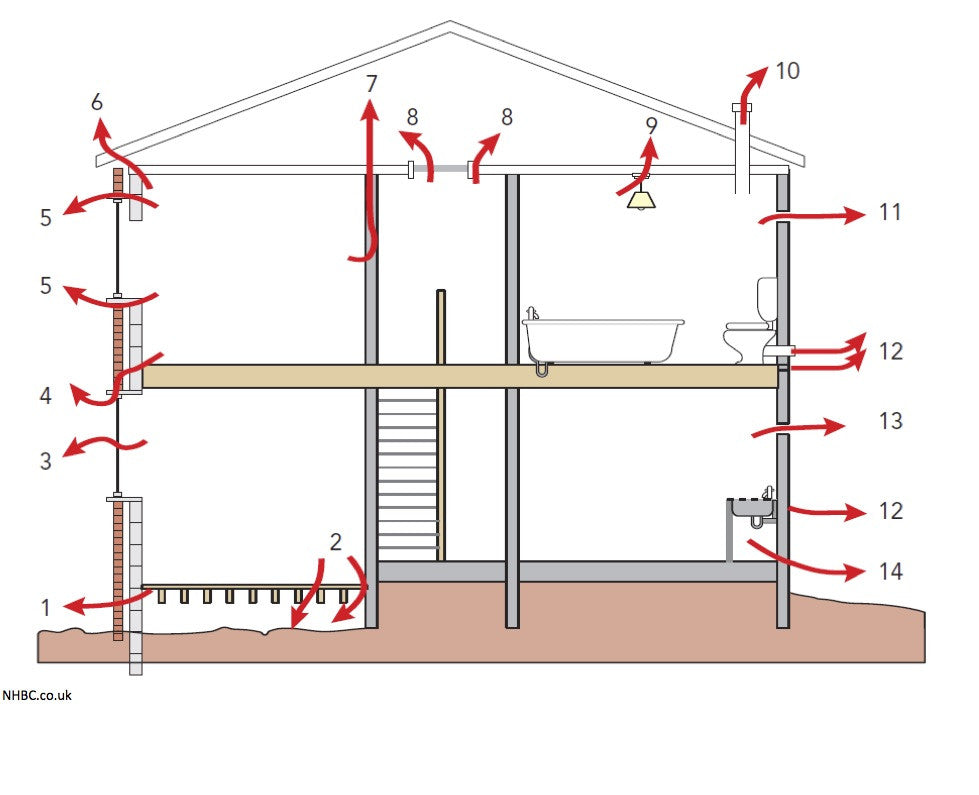News
Ventilation and Humidity in Cold Air in Passive Houses
Posted by Christopher Hirst on
Ventilation and Humidity in Cold Air in Passive Houses Only a small amount of moisture is contained in cold air (in the example: 3 g / m³) and this is already 90% of the moisture that air can absorb at -5°C (saturation humidity at -5°C). Warmer air can absorb significantly more water vapour, e.g. up to 17.3 g / m³ at 20°C If cold air is brought into a room by means of ventilation and heated to 20 ° C, it contains 3 g of water per m³ with a relative humidity of only 17.6%. The higher the quantity of...
Airtightness 2
Posted by Christopher Hirst on
Insulation, Insulation, Insulation – everywhere we look we are bombarded by companies telling us that insulation is the way forward when we want to achieve a low energy, nearly zero or Passive House buildings.However, insulation is nothing without airtightness, consider a really thermally efficient wall great, but if we have holes through the junctions of the wall or worse still a permeable wall structure then the thermal effect we are hoping to gain from will be lost to fresh air.Part F does address this problem to a certain extent as all new houses require a defined figure to be included...
Air Leakage AKA Air tightness
Posted by Christopher Hirst on
When people ask me what is the first thing I should look at when trying to reduce energy consumption in a house I always reply draught exclusion. I have visited properties many times on the pretence of giving advice on how to reduce heat loss and turn around to see a 20mm gap under the front door. “Get a sausage dog”. Using an old fashioned draught excluder will help keep the heat in the building, not very high tech but probably the most important item to consider. For example what is the point in installing high performance windows and leaving...


